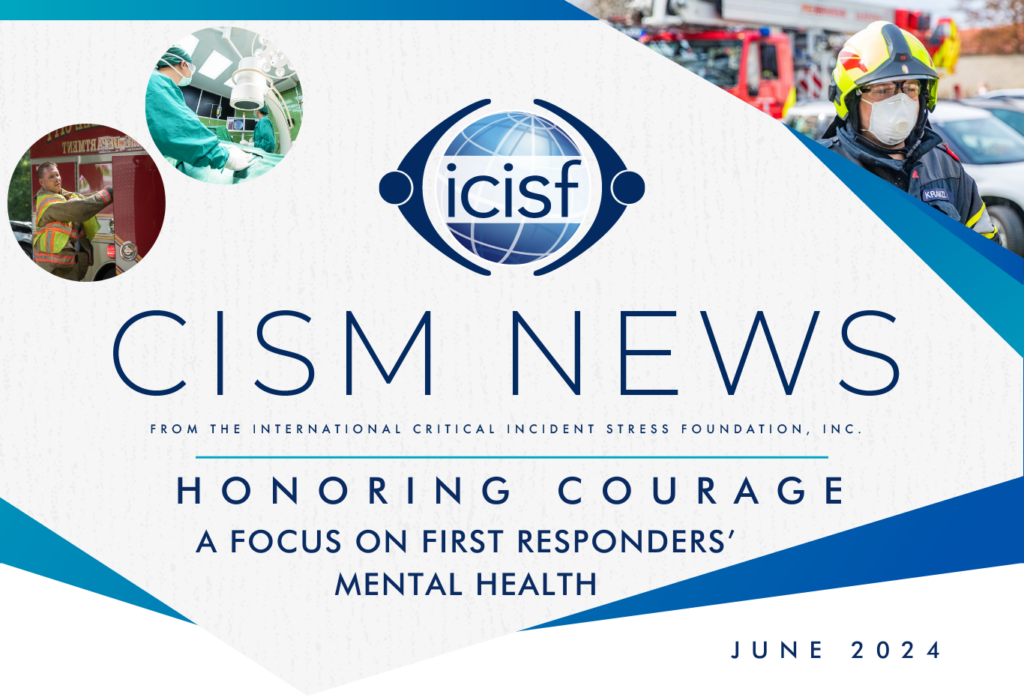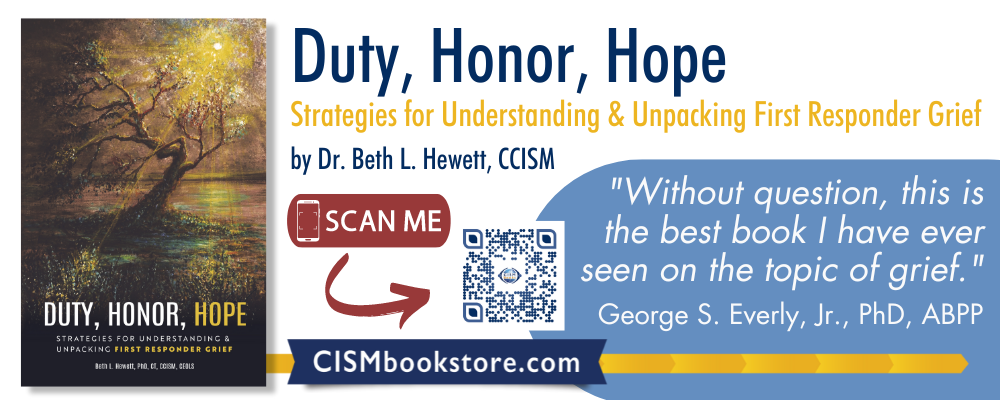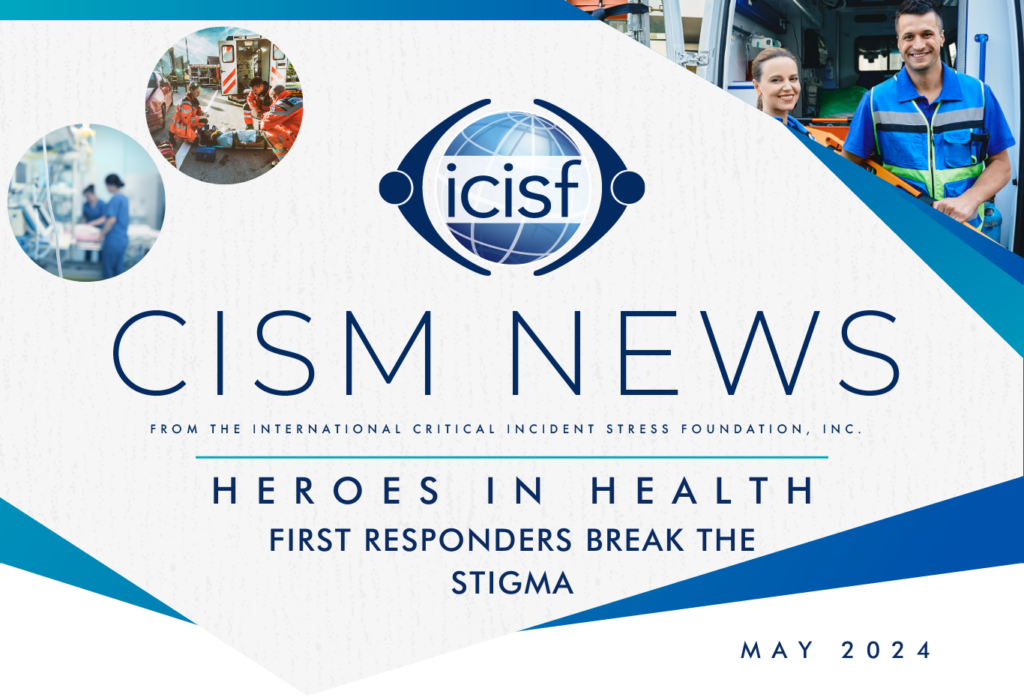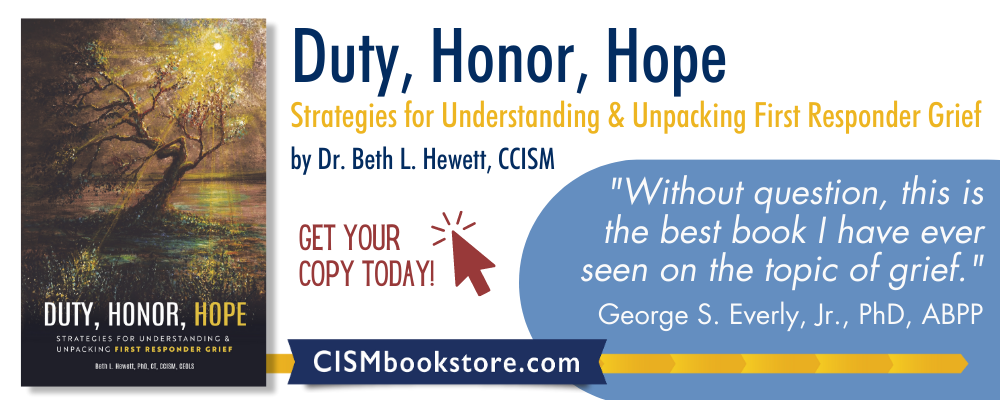Survivor Informed Peer Support (SIPS): Two Decades of Peers Rising as “VolunPEERS”
By: Cherie Castellano L.P.C.
Research Fellow Duke University
Abstract: A model entitled “Survivor Informed Peer Support ” (SIPS) is introduced in this article to describe the peer support activity created for a new initiative delivered at VolunPEER, a nonprofit organization to give and grow peer support. More than 20 years of peer support experience has informed this writer in an attempt to integrate the “lessons learned” to establish the “Survivor Informed Peer Support” model as a unique and effective approach to peer support services needed in these trying times of trauma and crises. Expanded and refocused, the “Survivor Informed Peer Support” model is designed to be delivered in person in 1:1 or group settings however this model stands apart from this writers original approach in “Reciprocal Peer Support” discussed in this article [International Journal of Emergency Mental Health, 2012, 14(2)]as the focus is survivorship and is trauma informed in this new approach.
Cherie Castellano, LPC AAETS, is President & Founder of VolunPEER Inc. Cherie has developed twenty-three unique peer support programs, some recognized as national models utilizing her expertise in peer support, crisis intervention and behavioral Healthcare innovations.
The tragic events on 9/11/2001 prompted the creation of a variety of culturally competent peer support telephonic services for rescuers and those most impacted by the disaster.as a way to address unmet behavioral healthcare challenges offered through UMDNJ- University Behavioral HealthCare. For more than two decades peer services were offered with a structured approach created by this writer known as “Reciprocal Peer Support.” After refining telephonic peer services for two decades, it seemed sufficient until I had a personal traumatic experience that informed my work.
My “Survivor” Story
After more than twenty years of leadership in peer support program development and service provision, my “norm” was to respond to others in need, as I would say “rescuing rescuers” using peer connections. On March 9, 2022, my family was devastated by a house fire that destroyed both our home and everything we owned; however our survival left us grateful for our lives despite the tragedy and trauma we endured. We moved into a hotel, bought clothes at a local convenience store and began our journey as a homeless family with three dogs, two young adult children and my husband and myself determined to be resilient.
To our surprise and awe, it seemed everyone we had ever supported or “rescued” in our lives wanted to give back to us now that we were in need. Almost every hour of the days that followed we were inundated with people volunteering to help, dropping off food, clothes, literally any item from a coat to a computer, we had assistance from the kindness of our community of volunteers! A “GoFundMe” was established and along with over seven hundred people donating to the rebuild of our home and our lives they included messages of hope and thanks that were invaluable glimpses of kindness that we would read out loud to each other often with tears of gratitude.
What became clear within that first month of our crisis was that our ability to survive was intimately connected to our faith, family, and community of volunteers who sustained our lives. The concept of volunteers and peer support seemed connected both personally and professionally as I began to consider a new application for peer support following traumatic events for my own mental health. Although I consider myself part of the law enforcement culture as my husband is a Captain in the Morris County Prosecutor’s Office, and as a mother of a child who had early childhood challenges, I am connected to special Moms, but this fire and traumatic event seemed to define my need for connection more than any other cultural consideration.
My survival seemed contingent on my connection to my peers, volunteers, and those who had a shared lived traumatic experience related to our fire. “Survivor Informed Peer Support” (SIPS) was conceptualized by my trauma but the launched for of a community driven peer support program offered through “VolunPEER Inc” a nonprofit organization with a mission to allow individuals to get, give or grow peer support.
The Survivor Informed Peer Support (SIPS) model
VolunPEER’s “Survivor Informed Peer Support/SIPS” model has four tasks; Task 1: Reflection & Connection, Task 2: Collect Information, Risk Assessment, & Trauma Resource mgt, Task 3: Wellness & Resilience Building & Mind/Body connection, Task 4: VolunPEER “Hand off”/ for sustainability w/Community support.
Task One – Reflection & Connection
Reflection is the first step in SIPS task one as an essential component for peer support success. Experiencing traumatic events and how we survive and thrive in the aftermath requires storytelling that is thoughtful with insight as peer support begins with a reflection based on a shared lived traumatic experience. “Survivor Informed Peer Support ” requires a pure presence at the heart of the reflection and is necessary for successful peer support engagement. In SIPS, the peer supporter is trained and prepared to write their story of trauma and survival to determine the key points to share lived experience without triggering experiences or monopolizing the initial engagement. Reflection allows for a prepared approach to embrace one’s own survival story as a shared experience to connect to the client without judgment, avoiding preaching or directing, to cope with the moments of shared suffering and pain with a strength based approach.
Connection can be enhanced when reflection is the first strategy for SIPS task one. Connection is guided by feeling with the survivor being supported with SIPS and through implementing active listening and Theresa Wisemans techniques in empathic listening. “Matching” traumatic experiences for survivors to connect may often not be exact but will be guided by the SIPS categories of survivors in the SIPS model.
When an initial contact is of a crisis nature, soon after the event occurred, the intimacy created by the sense of vulnerability of all involved expedites the connection of both the peer in need and peer supporter and also increases the risk for triggers and challenges. Survivors of traumatic events who reach out for help if handled poorly may refuse the connection, perhaps forever.
SIPS peer supporters will be trained to recognize a resistant peer at the initial contact, as well as to recognize their own frustrations and need to help in the peer relationship. Strength based approaches that maintain a focus on serving others needs is a primary tool to connection. If a peer supporter fails to establish reflection and connection of a pure presence with the peer in need the outcome will often result in premature termination of the contact and in turn the helping relationship. In supervision, peer supporters are challenged to explore why the connection was not made and how their reflection may have been experienced. Part of the need for ongoing reflection and self-assessment is to ensure that the peer is aware of his or her vulnerabilities and strengths in the beginning of the connection process.
The SIPS model will match peers most effectively based upon shared traumatic experiences related to their survivorship category. Shared experiences related to trauma is the primary matching criteria with the cultural considerations being a secondary component as needed. It is essential, however, that the peer supporter’s experience is in the past, ideally survived, treated and resolved in terms of capacity to share without being triggered. If he or she struggles in relapse or life changes it is an important component of self-awareness to ensure reflection and connection are beneficial to both the peers and those offering support by encouraging SIPS peers to use self-care techniques.
Task Two -Collect Information, Risk Assessment and trauma resource management.
In task two the Survivor Informed Peer Support Model is guided by structure and tools. To collect certain data, one must be ready to collect information about the traumatic event as the survival theme as well as the holistic view of the person’s life before, during and after the traumatic event. SAMSHA’s model of peer support frames the exploration to collect information. SIPS peers will get basic demographic and general data by using scripts forms and in person data forms as needed. Tools offered in SIPS include but are not limited to CAGE questionnaires, crisis and suicide assessment infused into every initial session as needed.
Listening for emotion not “the story” is essential and the basics of trauma informed care to ensure safety and basic needs met are included. To ensure a safe environment, an office space or face to face connection must be discreetly integrated into the information gathering experience. The information gathering phase, similar to the reflection and connection phase, utilizes the same guidelines for engagement, respect and confidentiality. For SIPS intervention services a model like QPR or SAFER-R models of individual crisis intervention can be an augmentation as developed by Dr George Everly at the International Critical Incident Stress Foundation, Inc (ICISF).
A conversational collection of information is not an assessment unless a peer is reporting acute reactions which require a clinician. Reflection, connection and shared lived experiences create a significant opportunity for information sharing in a safe and supportive environment. Shared information and experience foster accurate information collection to ensure SIPS peers and those served are provided all services necessary to ensure safety.
Task Three – Wellness & Resilience building for mind/body connection.
Task three begins the resilience process to collaboratively explore the evidence-based model of wellness (Swarbrick) and or resilience (Seligman) as a structure to create planning together in the wake of a traumatic event. Survivors use their wellness techniques and inherent resilience but in this phase the peer role aligns with those being served to confirm needs and goals to encourage wellness and build resilience. Prompts and tools offer the SIPS peer a format to engage in this phase of the peer relationship. Today’s web-based referral options and access to information are so prevalent as a primary tool for any mental health challenge a survivor can customize their plans. The collaboration between survivors fosters a partnership that encourages healing for all involved. An essential key element in this phase is to use SMART goal strategies with fluid options to adapt in the process of rising from the traumatic event and the vicissitudes in the aftermath of life forever changed.
All wellness and resilient resources and plans offered can impact the credibility of the peer supporter if plans and services offered fail. A peer in need as a survivor will rationalize that the peer supporter is genuine if services offered go well or is a phony and not truly interested in helping if the resources/referrals go badly. SIPS peers may base this task on their own accounts of their experience. SIPS allows peers to model the importance of recognizing resilience. Reinforcement of insights is found in the self-care activities offered to the SIPS peers to fuel their work with other survivors in need. SIPS peers are encouraged to work within a three-session model and handoff as needed to clinicians; however it can be an open-ended process based on the client’s needs.
Self-Care is emphasized with opportunities for assistance encouraged within the peer support team and managed through resilience building activity and advocacy.
Task Four is the VolunPEER “Hand off”/ for sustainability with Community support. In this phase the SIPS peer begins to consider the “handoff” to community and trauma informed resources to ensure the SIPS interactions are time limited and structured to manage expectations and foster healthy relationships. The SIPS Four survivor groups can be offered a minimum of one time per month as a psychoeducational group based on survivor experiences. Trauma and connection may create a feeling of guilt or shame for both the SIPS peer and client if the three-session goal is not clearly articulated at the start of the process.
In addition, an ideal handoff may include the SIPS peer to a group rather than a total disconnect. SIPS strategies may include a monthly email or connection during anniversary dates of the traumatic event. In order to ensure a rewarding experience, the ability for a client to re- enter a SIPS episode of care beyond the initial three sessions. It is essential based on limited resources for the handoff that the capacity to offer additional SIPS peer services may be varied. Praise bombardment activities, social service supports and groups to create a community transition for both the SIPS peer and client is essential for both to move forward.
Defining VolunPEER
Why VolunPEER? The current limits of existing behavioral healthcare services require another option for peer support to fill the gaps or offer hope while waiting for professional clinicians to begin treatment. Post Covid isolation and change have left many of us disconnected with limited contact and community experiences. With resources LIMITED for mental health support, current systems and materials for collaboration are often not culturally competent and peer support is poorly defined & often not a standardized integrated service in behavioral healthcare service delivery systems. A crisis, like our fire, may offer an opportunity which then is often lost when the smoke clears and our sustainable lives resume.
VolunPEER Inc.’s mission is to give and grow access to “Survivor Informed Peer Support” that is simple, structured, & collaborative with training to combat “peers gone wild. “The VolunPEER Mission is to GET, GIVE, & GROW peer support to those in need. “Survivor’s Shared Lived Experiences” offers connection & healing with a foundation of trauma informed training, support, & resources for VolunPEER services. VolunPEER Inc will partner with non- profit organizations to GROW their current peer support to expand and enhance peer support services. VolunPEER Survivor Informed Peer Support model (SIPS) emphasizes the survivor connections are the most profound. Surviving Traumatic events offer connection as a peer that emphasizes strengths & the need for self-care. Survivor experiences are embedded in social service crisis continuums and can ensure confidentiality to combat stigma, inform resources and mandates structured training for peer support interactions with a trauma recovery focus.
Survivor Informed Peer Support is a Trauma Informed Model
There are four Survivor Groups targeted for the SIPS Peer intervention which include;
Survivors of Disasters- Fire/Flood/Violence/Homelessness/9/11 Man made/natural disasters, Survivor First Responders- Police, Fire Ems, Military, Healthcare workers exposed to a traumatic event, Survivors of Trauma- Medical Illness, Traumatic Events- Abuse-Physical/Sexual, Traumatic Injury, Loss, Survivor Specialty groups- Parents of special needs child/adult Clergy, LGBTQ, College Students, underserved populations with traumatic events.
VolunPEER services include.
GET VOLUNPEER SUPPORT- Access-Request to GET VolunPEER support through our automated system online via the website or call to request VolunPEER support. Offerings include 1:1 VolunPEER support in person, three session model, VolunPEER Survivor Support groups in person (open ended groups), and Virtual VolunPEER sessions/1:1 & Group when indicated.
GIVE VOLUNPEER SUPPORT- VolunPEER Training Overview Sessions will begin the process. Following the overview session an additional four skill building sessions will offer support and competency. Clinician resources and support by licensed clinicians will be accessible through a VolunPEER Resource directory.
GROW VOLUNPEER SUPPORT-Request a VolunPEER Peer support Consultation for a needs assessment and to grow your organizations peer support efforts.
Summary
In Survivor Informed Peer Support trauma and survivorship is the focus for effective peer connection which must be reframed in a trauma informed lens. In 2014 the Substance Abuse and Mental Health Services Administration (SAMSHA) established six guiding principles for trauma informed care.
The six guiding principles are:
1.) Safety
2.) Trustworthiness and transparency
3.) Peer Support
4.) Collaboration and mutuality
5.) Empowerment, voice and choice
6.) Cultural, historical and gender issues.
The guiding principles stress the need for organizations inside and outside of mental health to ensure the safety of clients and staff, promote transparency in decision making and encourage the sharing of lived experiences between clients and staff. A call to foster collaborative relationships and validate the strength of clients aligns with peer support concepts. (Rhodes, l., Counseling today October 2023 Vol 66 No. 4, pg 25-28) In my peer support and crisis intervention work over the last twenty-five years the evolution of peer support has been impacted by the recognition and growing interest and national standardization of the field as SAMSHA defined in the National Certification standards June 2023. In addition, the varied application of peers embedded into multidisciplinary teams offering behavioral healthcare systems is an indication of the recognition and value of peer support as an effective intervention to foster healing. An enhancement to treatment when indicated rather than a replacement is the emphasis in SIPS. Traumatized people can trigger each other but they also can share the “Glimmers’ ‘ The term glimmer, however, was introduced in 2018 in the book The Polyvagal Theory in Therapy: Engaging the Rhythm of Regulation2 by licensed clinical social worker Deb Dana. Glimmers reflect times in which we reflect on the light in the darkness of surviving a traumatic event and it is an experience to cherish rather than forget. Much like the Japanese art of pottery kintsugi, the broken pottery pieces are filled with gold to fill in the cracks to be forever changed but more beautiful with the recognition of the brokenness and new gold-filled structure that is potentially offered stronger. SIPS interventions highlight that post traumatic stress is inevitable and temporary but more important is the emphasis on post traumatic growth.
A focus on Posttraumatic growth describes three categories which include Sense of Self, Relationships, Spirituality/religious beliefs. Individuals do not simply survive without negative effects; they experience themselves as better than they were before the traumatic event. (Calhoun and Terdeshi ,2000) Trauma allows an opportunity to grow as a person. If trauma may allow an opportunity to grow then Survivor informed peer support may allow an opportunity to grow together rising towards the light out of darkness.
Questions regarding this article should be directed to [email protected].











